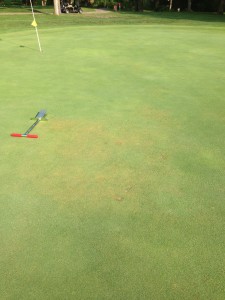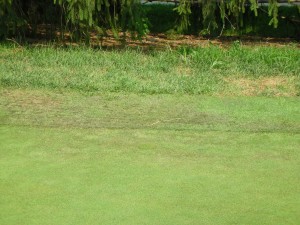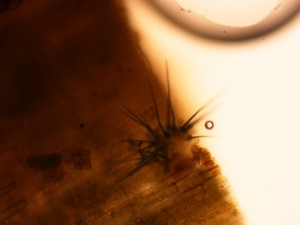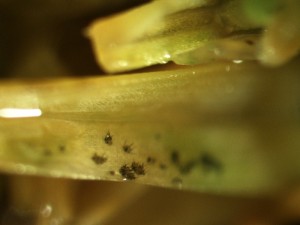Here is a sight that no superintendent wants to find on their course.These photos are from July/August of recent years.


What is this problem? It’s hard to tell just based on photos, but after follow-up testing in the lab, we determined this is anthracnose, an important fungal disease in putting greens.
- How does nitrogen (timing and amount) affect anthracnose?
- Does rolling increase anthracnose? What about foot traffic?
- How does irrigation impact anthracnose – should I run the turf wet or dry to prevent it?
Over the past few years, a team of turfgrass researchers has been conducting experiments to answer these questions. The have developed a science-based list of best management practices (BMPs) for turfgrass anthracnose. Various researchers studied the effects of nitrogen, potassium, mowing, rolling, plant growth regulators (PGRs), irrigation, topdressing, aerification, foot traffic, and fungicides. Based on that work, they developed a set of recommendations.
Rather than copy all the text into this page, I’ll provide the link below to their BMPs (it’s 2.5 pages – detailed, but concise and easy to understand), then add a few comments and photos.
http://turf.rutgers.edu/research/bmpsanthracnose2014.pdf
Here in Kansas, the samples of anthracnose that I have seen were usually associated with the “risk factors” identified in the BMP list – low mowing, keeping N low to keep things “lean and mean” before a tournament, poor drainage at the site, etc.
Okay – anthracnose is more likely during summer stress. Why am I talking about this NOW?
It’s important to keep the BMPs in mind all season long, not just when you are already into a stressful time of year. Managing the turf holistically, all-season long, will help reduce your risk of this disease. As you’ll see in the BMP’s, it’s mostly a set of good agronomic practices, too. There’s nothing on that list that is out-of-bounds with routine good agronomy. And, you don’t necessarily have to do EVERYTHING on the list but I’m sure you will find some practices that fit with you and your site and budget.





